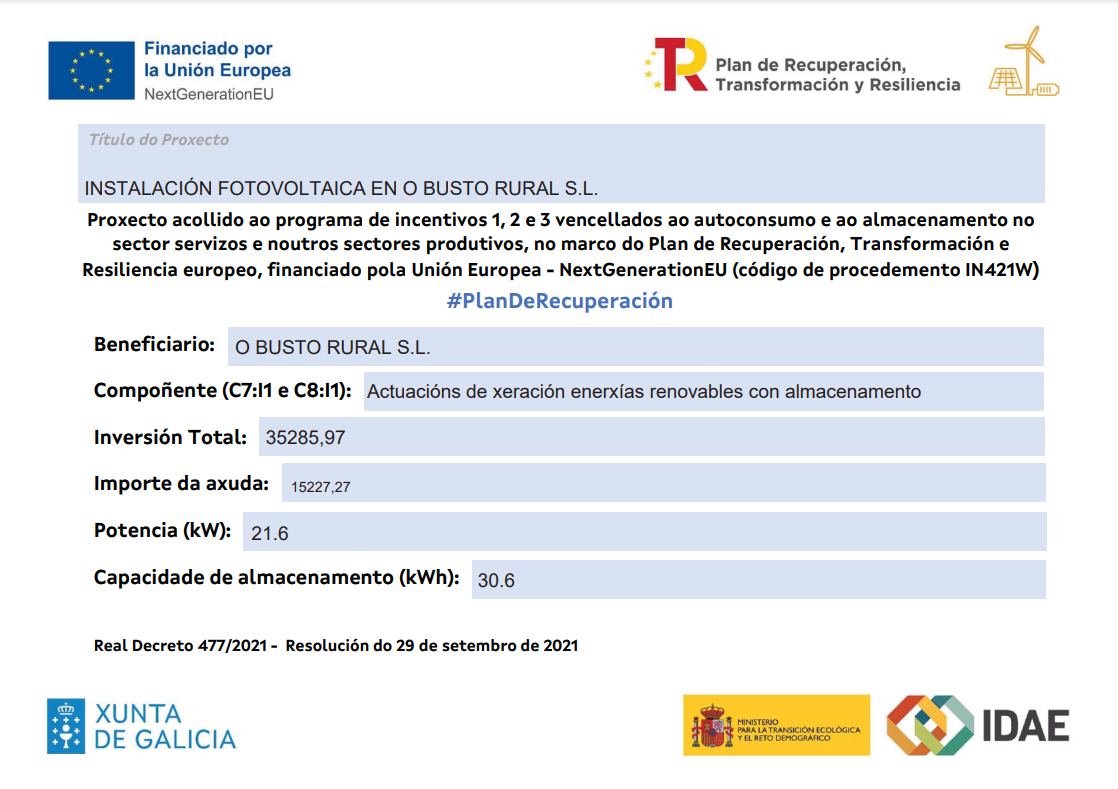A village located in the south of the province of Lugo, belonging to the region of Tierra de Lemos and part of the Ribeira Sacra. Characterized by its mountainous topography, with steep elevations that descend from east, 1,250 meters above sea level in the Sierra do Courel, to west, 230 meters on the banks of the Sil river. This particular situation endows the municipality with a great natural, archaeological, religious, historical and cultural heritage, with privileged sites, places of interest and ethnographic curiosities that invite you to visit them.
You can discover by doing the different TRAILS that are in the municipality, some within the municipality itself, such as the Route of the Four Knights, Chestnut and Honey Route, Loureiro Route, Route from the Hermitage of San Vitoiro to the Iron Mine of Veneira, Route from the Mazo to Parada dos Montes or Route through the villages of abandonment. And others being part of longer routes, such as the Mixed Water Route, Gold and Iron Route, Lor Route or the South or Winter Route to Santiago de Compostela, which runs through several of its parishes, and that the Xunta highlights that this official route is one of the most historical and traditional to access Galicia from Castilla designed by the Romans. Later, this route was used as a medieval road taking advantage of the old roads, used by royalty, pilgrims, French troops in the war of independence,... and first entry of the railway in Galicia from the Plateau.
To delight in spectacular views of the Sierra del Courel, the Valley of Lemos, the Lor river or the Canyons of the Sil river and the Ribeira Sacra, you just have to look out at its magnificent VIEWPOINTS, such as those of Os Catro Cabaleiros in Pena Redonda, A Capela in Vilacha, Paramedela, Os Pasos in As Laceiras or San Vitoiro in Saa.
A wide NETWORK OF TOURISTIC RESOURCES allows you to discover magical places and unique elements due to their special characteristics. Such as the Devesa de Loureiro, the Sequeiros do Mazo, Sobreira (cork oak) de Santiorxo, the Roman Gold Mine of Os Medos, the Medieval Bridge, Molino de Barxa and A Cova das Choias in Óutara, of natural origin and altered by the Romans for the extraction of iron, and with an extraordinary natural wealth for its luminescent moss (due to the fact that it has filaments that reflect emerald green light producing the visual illusion of luminescence), included in the Catalog of Endangered Species of Galicia due to the fragility of the habitats it occupies. And the different species of bats in a vulnerable situation that inhabit it, highlighting the cave bat, which has the largest known colony in Galicia, and the large horseshoe bats that occupy the cave in autumn.
The Sil canyon constitutes a deep and narrow valley, and is one of the most important elements of the Ribeira Sacra, with vertical slopes worked from ancient times producing a grape of excellent quality. The parish of Vilachá de Salvadur, included in the Denomination of Origin Ribeira Sacra, subzone of Amandi, is considered of tourist interest for its many centuries-old wineries, some of the oldest in the Iberian peninsula, where the Vilachá Wine Fair is held on the first weekend of May, where you can taste the wines harvested in this parish. It also houses the Ethnographic Wine Museum. In the town of Trasmonte is the first furancho of the Ribeira


























